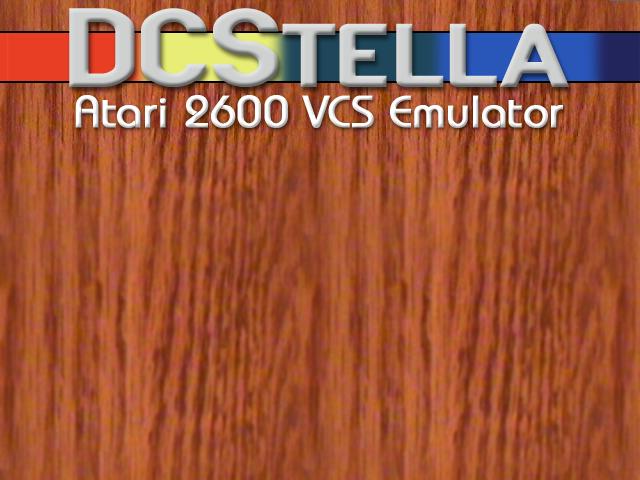I don’t know about you, but I love the Atari 2600 (or CVS).
Sure, it’s old and it’s graphics are primitive and the sound might cause your inner ear to bleed, but it’s charm is undeniable. That’s why ATARI and the seemlessly “queen of licenced clones” AtGames released the third installment of Atari Flashback.
Before giving the Flashback 3 a spin, I’d like to make my own flashback on my Atari 2600. I was born way after the 2600 saw the light of day. Almost decade after. Practically I came out my mother’s womb by the time Super Mario was hitting big in the NES.
But that didn’t mean I had a NES in our household by default. In Greece particularly, there was a lag for new electronics to arrive. The lag varied from a few weeks, to a few months. Plus, my family was kind of poor at that time, so my dad had a 2600 and a 32-games dip-swich cartridge to keep my brother’s gaming demands at bay, until he would come up with another game console.
So, the first game I remember playing conciously is Yar’s Revenge. Along with other weird games I didn’t even know their name before the internet search.
Today, there’s a ton of ways to get your dirty paws on old Atari games. The first one is to actually get an ATARI 2600 CVS console, hook it up to the old aerial and have grand old time. There are plenty of cartridges out there for plenty of fun. Also, the Harmony cartridge will save you a lot of money.

The other way is emulation which, through emulators like Stella, would allow you to play ALL games that ever released for the 2600 plus some nifty homebrew.

The third way is this small thingie: One of the three Atari Flashback Consoles.
The package includes: The microconsole
Two joysticks that resemble the old square ones.
the power supply that will remind you of a Mobile Phone AC adaptor, the mandatory instruction manual and a pretty neat poster.
The console itself is quite small. It has a toy-feeling to it but not just any toy. A slightly more expensive famiclone is the best description for it. The buttons up there are On/off, start, difficulty A, Difficulty B and Select. Some of them are push-in swiches, others are just buttons that press with a very loud click. As a typical “plug and play” machine, its video and audio connectors are RCA and hard-wired to the console.
The controlers share the same feel. They are just a bit smaller that the originals, but way less heavy and way less stiff. The quality is somewhat questionable though since they doesn’t look like they would take any of the abuse the original controllers would take. [Update]: the original paddle controllers work fine. Same goes with Master System gamepads but, sadly, Mega Drive gamepad’s D-pad won’t work normally. Probalby the console thinks is a paddle, thus only left and right works. Old controllers work wonderfully.
The last thing you might take out of the box, is the power outlet. A tiny A/C adaptor that outputs 9V. Pretty standard.
Now, let’s get to the games.
The game console works fine. I mean, the 2600 by today’s standard is a laughably simple hardware with laughably simple software running into it. So, the game should be alright and that’s the case most of the times. If you’re wondering about what games are included, here’s the list.
The games are presented within in a simple menu and can be selected by scrolling using up and down and changing pages using left and right – on the controller of course. The menu certainly gives out that the machine isn’t old and breaks the retro feeling, but whoever isn’t into purism, won’t mind it.
The device adds a new feature to all games: Pause. You need to press the fire button on the controller and the select button on the console. While retro on its own way (Master System had its Pause button on the console itself) it’s a new feature for 2600 games none the less.
The games are faithful for the most part with some sounds being out of place occasionaly but overall it’s fine. The better video connection gives out some nice clean graphics and the colors and framerate are correct. Some extra fiddling with your television settings might lncrease the clarity and color performance.
The only complain – it’s the same with all the Atari Flashback consoles- it’s the lack of cartridge port. I mean, I know people might be angry if some cartridges won’t work, but consider that many people who actually have cartridges they want to play, most certainly almost have an original console laying around. Also, I don’t know why they removed the internal contacts for adding a port yourself. Yes, you might avoid malfunctioning and such but it’s already stated by AtGames and right at the box that the company is not responsible for possible damages due to modifying so they’re clear off the shit.
Closing this review, I have to admit that the Atari Flashback 3 is descent cheap-o-matic. Yes, it’s not VERY cheap indeed. I found it at a near MediaMarkt for 55€ which isn’t, like, Lexibook crappy console-cheap but it’s nice, portable and if you ‘re collecting, you can play a nice collection of games without having to put through stress your prized CVS collection items. It’s ideal for gathering friends to revive old times, without exposing your old beloved ATARI to beer spills, pets, dust, etc. Not that it won’t survive, mind you, but it’s almost 40 years old.
So, it’s a good buy – I might go play now too. So, See ya!









It being resistan to beer spill will come in handy when I get my hands on those joysticks!
ΑπάντησηΔιαγραφή